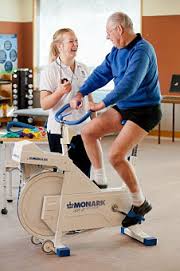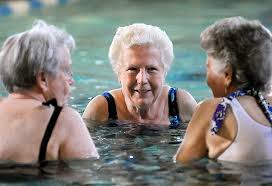Introduction:
According to the WHO (World Health Organization) Neurological disorders are diseases of the central and peripheral nervous system. In other words, the brain, spinal cord, cranial nerves, peripheral nerves, nerve roots, autonomic nervous system, neuromuscular junction, and muscles. These disorders include epilepsy, Alzheimer disease and other dementias, cerebrovascular diseases including stroke, migraine and other headache disorders, Multiple Sclerosis, Parkinson’s Disease, neuro-infections, brain tumors, traumatic disorders of the nervous system due to head trauma, and neurological disorders as a result of malnutrition[1]
Classification of LTNCs:
Long-term neurological conditions (LTNCs) can be classified into:
■ Sudden onset conditions (eg. acquired brain injury of any cause (including stroke), spinal cord injury)
■ Intermittent conditions (eg. epilepsy)
■ Progressive conditions (eg. multiple sclerosis (MS), motor neuron disease (MND), Parkinson’s disease (PD) and other neurodegenerative disorders)
■ Stable conditions with/without age-related degeneration (eg. polio or cerebral palsy) [2]
Definition of PA
Physical activity [PA] is defined as any bodily movement produced by skeletal muscles that result in energy expenditure. Exercise is a subset of physical activity that is planned, structured, and repeated and has as a final or an intermediate objective to the improvement or maintenance of physical fitness.[3]
Epidemiology:
- Up to 1 billion people, nearly one in six of the world’s populations, suffer from neurological disorders.[4]
- The US National Institute for Neurological Disorders and Stroke (NINDS) estimated in a 2006 report that about 50,000 new cases of Parkinson’s disease are diagnosed in the US each year, and the total number of cases in the US is at least 500,000.[4]
- There are 10 million people in the UK living with a neurological condition with Over one million people (2% of the UK population) are disabled by their neurological condition.[5]
- 795,000 strokes (new and recurrent) in the US per year.[6]
Neurological conditions are the most common cause of serious disability and have a major, but often unrecognized impact on health and social services.[7]
Implications:
– People with neurological conditions can experience difficulties ranging from living with a condition which may weaken or disable them for periods of time through to needing help for most everyday tasks.[5]
– The implications differ from diagnosis to another and according to the severity of the disease.
– Many patients have complex disabilities which include cognitive, behavioral and communication problems as well as physical deficits.[2]
– Stroke survivors often become deconditioned and predisposed to a sedentary lifestyle, and are at increased risk for falls and high risk for recurrent stroke and other CVDs [6]
– Depression is also one of the implications of Parkinson’s disease, stroke and MS with incidence rates between 20–45%, 10–34% ,and 25% respectively[8][9]
– People with a neurological condition may struggle to express themselves clearly, either, spoken, written or both. They may experience challenges with:
- Severe fatigue and/or weakness
- Impaired hand dexterity
- Tremor of hands or other body parts
- Controlled use of the hands
- Other motor-control impairments such as loss of balance or co-ordination and difficulty walking, visual impairment or seizures
- Psychological and social functioning such as speech difficulties, including slurring and other losses of communication skills, memory deficits and mood disturbance. [10]
Cardiorespiratory Fitness in Neurological Conditions
A general reduction in aerobic fitness has been recorded in acquired brain injury[11], stroke[12], MS[13] and Parkinsons[14].
These conditions often lead to reduction in mobility, and therefore secondary deconditioning.
An increasing body of evidence[13][12][11][2] is mounting which demonstrates the efficacy of specific cardiorespiratory training in this population.
Benefits of physical activities in neurological conditions:
– Researchers have recently discovered a strong link between physical exercises and the prevention or delay of neuro-degenerative symptoms, which include a breakdown of motor skills and mental capacity in patients suffering from debilitating neuro-diseases such as MS and Alzheimer’s.[15]
– Exercise seems to improve the physical and emotional well-being of patients who already have Alzheimer’s disease. The patients exercised moderately for as little as 60 minutes each week. Doctors noted patients who exercised were less depressed, wandered away less, suffered fewer falls, and were placed in nursing homes later, compared to patients who did not exercise.[16]
– Patients with neurological disorders who exercise experience less stiffness, as well as reduction in, and even reversal of muscle wasting. [16]
– Research also has shown that exercise can improve gait, balance, tremor, flexibility, grip strength and motor coordination in patients with Parkinson’s disease.[17]
– Progressive Resistance Training [PRT] has been found to be beneficial for people with MS; a 2012 systematic review[18] concluded that “Strong evidence regarding the beneficial effect of PRT on muscle strength was observed. Regarding functional capacity, balance and self-reported measures (fatigue, quality of life and mood) evidence is less strong, but the tendency is overall positive.”
– Once patients become unable to mobilise, there can be a decline of their neurological condition. Recent research suggests a possible mechanism for this deterioration: a study on mice suggests that weight bearing physical activity of the lower limbs is essential for the production and maintenance of healthy neural cells. The authors state, “The overall results support the existence of a link between reduction of exercise and muscle disuse and metabolism in the brain and thus represent valuable new information that could clarify how circumstances such as the absence of load and the lack of movement that occurs in people with some neurological diseases, may affect the properties of neural stem cells and contribute to the negative manifestations of these conditions.”[19]
Barriers to Physical activities [6][20]:
– Chronic fatigue in 35%-95% and can be related to depression
– The disease severity
– Pre-existing co-morbid conditions.
– Lack of motivation.
– Cognitive and learning abilities
– Societal and environmental; program costs, means of transportation, accessibility, family support, social policies, and social stigmas
– Barriers related to fitness and health facilities such as;
- lack of disability awareness among fitness professionals
- Warmer environments cause over heating
- Accessibility to the toilet
- Swimming pools temperature is too cold and individuals cannot move fast enough to get war
- Fear of falling
- safety issues such as wet floors in changing rooms, poorly maintained equipment and unsuitable hoists in pool areas
Exercise prescription:
The best way to achieve these benefits is to exercise on a consistent basis. People with Parkinson’s enrolled in exercise programs with duration longer than six months, regardless of exercise intensity, have shown significant gains in functional balance and mobility as compared to programs of only two-week or ten-week duration.[17]
– Assessment & risk screening should be conducted by the specialized physician before engaging in any physical activities program.[21]
– For aerobic exercises it’s recommended to spend 150 minutes (2.5 hrs per week) moderate intensity exercises in bouts of 10 minutes or more (30 minutes 5 times per week).[21]
– For strengthening exercises, Progressive muscle strengthening activities that involve major muscle groups of the body to be 2 or more days per week.[21]
- Always warm up before beginning your exercise routine and cool down at the end.
- If you plan to work out for 30 minutes, start with 10-minute sessions and work your way up.
- Exercise your facial muscles, jaw, and voice when possible
- Sing or read aloud, exaggerating your lip movements.
- Make faces in the mirror.
- Chew food vigorously, avoid swallowing large pieces. Instead, chew each piece for at least 20 seconds.
- Try water exercise, such as aqua aerobics. These are often easier on the joints and require less balance.
- Work out in a safe environment. Avoid slippery floors, poor lighting, throw rugs, and other potential dangers.
- If you have difficulty balancing, exercise within reach of a grab a bar or rail. If you have trouble standing or getting up, try exercising in bed rather than on the floor or an exercise mat.
- Most of all, select a hobby or activity you enjoy and will keep doing. Some suggestions include:
- o Gardening o Walking o Swimming o Water aerobics o Yoga o Tai Chi
- Rest your muscles for at least one day between strength training sessions
- activities should be performed at a moderate intensity. Moderate-intensity physical activity is usually a 5 or 6 on a scale of 10, and causes your heart rate to go up. As a general rule if you’re doing moderate-intensity activity you can talk, but not sing a song, during the activity.
- Combined Upper and Lower body exercises: elliptical trainer
- Some options for activity include: Repetitions are the number of times you lift and lower a weight. Try to do 10-15 repetitions of each exercise. This counts as 1 set. Gradually work up to doing 2 sets of 10-15 repetitions of each exercise. Pick a resistance (free weights, cable pulleys, bands, etc.) heavy enough that you can barely, but safely, finish 10-15 repetitions of the last set. Be sure to rest for 1-2 minutes between each set and exercise. Strength training activities for the upper and lower body • Weight machines • Free weights • Cable pulleys Other types of exercise that may bring benefits • Elastic resistance bands • Aquatic exercise • Calisthenics
- Stop when experiencing unusual symptoms or pain
Useful Physiopedia Links:
Resources
The References
The effect of aerobic training on rehabilitation outcomes after recent severe brain injury: a randomized controlled evaluation.
Arch Phys Med Rehabil. 2001 Feb;82(2):174-82.
Cardiorespiratory fitness and walking ability in subacute stroke patients.
Arch Phys Med Rehabil. 2003 Dec;84(12):1780-5.
Impact of aerobic training on fitness and quality of life in multiple sclerosis.
Ann Neurol. 1996 Apr;39(4):432-41.
Effects of fatigue on physical activity and function in patients with Parkinson’s disease.
Neurology. 2003 Apr 8;60(7):1119-24.
Multiple sclerosis and progressive resistance training: a systematic review.
Mult Scler. 2012 Sep;18(9):1215-28. doi: 10.1177/1352458512437418. Epub 2012 Apr 24.
Reduction of Movement in Neurological Diseases: Effects on Neural Stem Cells Characteristics.
Front Neurosci. 2018; 12: 336.
Published online 2018 May 23. doi: [10.3389/fnins.2018.00336]
PMCID: PMC5974544
PMID: 29875623


